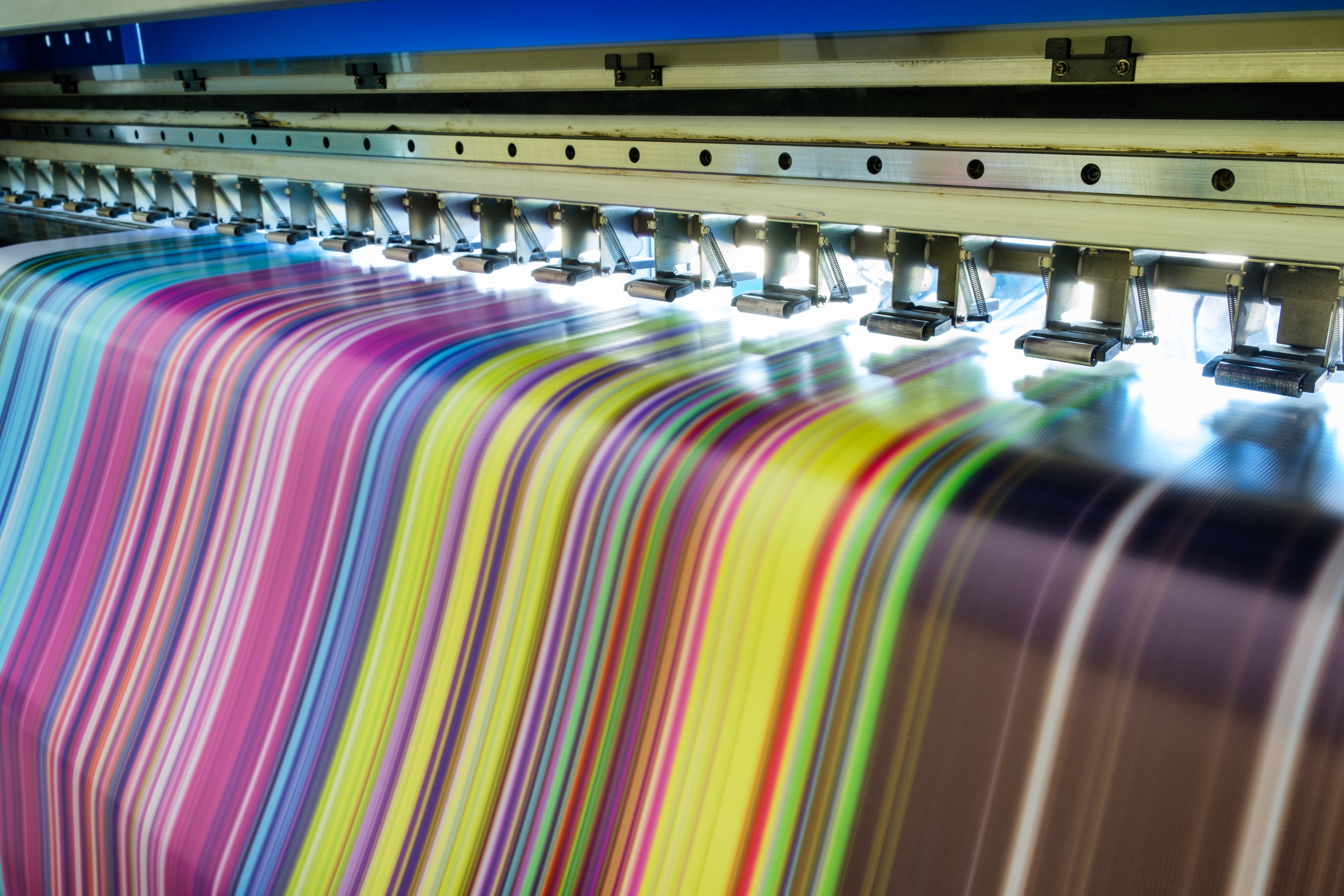The Small Business Guide to Choosing the Best Printing Services
In the fast-paced business world, first impressions are often made through tangible materials like business cards, brochures, and stationery. For small businesses, these printed products are not just costs—they are corporate ambassadors meeting the world on your behalf. The right printing can signal quality, reliability, and attention to detail, the very characteristics you want to be associated with your brand. In this post, we'll guide you through the process of finding quality printing services to ensure your business materials stand out for all the right reasons.

Understanding Your Printing Needs: Digital vs. Traditional Printing
Before examining local options, it's important to understand the fundamental choice between traditional and digital printing technologies. Traditional printing methods like offset lithography are known for producing high-quality prints in large quantities, best suited for bulk jobs with long lead times. Conversely, digital printing offers the ability to print on-demand and is ideal for smaller runs with variable data, allowing for personalized prints in a more cost-effective manner.
Digital printing has gained popularity because of its quick turnarounds, high-quality outputs, and the flexibility to print small batches economically, a key advantage for many small businesses.
The Advantages of Digital Printing for Small Businesses
Small businesses often function in dynamic environments, where the need for agility and quick decision-making is paramount. Digital printing caters to these requirements by offering the following advantages:
-
Affordability for Small Runs: With no setup costs for plates or films, digital is often cheaper for small print runs.
-
Speed: Digital presses can produce a job in hours, compared to traditional methods that may take days for setup and production.
-
Variable Data Printing: This feature allows you to customize prints with unique information, perfect for personalized marketing and direct mail campaigns.
-
Proofing Flexibility: With digital, you can print small batches as test runs to assess colours, design, and quality before committing to a larger print job.
Understanding these advantages can help small businesses leverage digital printing to support their marketing initiatives and seasonal campaigns effectively.
Digital Printing Methods and Technologies
Overview of Digital Printing
Digital printing represents a cutting-edge method that leverages digital presses, eliminating the traditional need for printing plates. This technique facilitates the direct transfer of images and text from digital sources, such as computers, to a diverse array of substrates including photo paper, canvas, glass, metal, and various fabrics and papers. Its capability to adapt to different media types, offering an extensive range of finishes from glossy to matte, highlights the versatility of digital printing.
Technologies Employed
The realm of digital printing technology is home to several essential tools and devices, with inkjet and toner-based printers standing out. Inkjet printers, known for spraying minuscule droplets of ink to craft high-quality images with vibrant colours, are the go-to for fine art printing and glossy finishes. Conversely, toner-based printers, which use heat to bond toner powder to the paper, cater to high-volume printing at lower costs with their efficiency and precision in producing detailed text and images.
Advantages of Digital Printing
A key benefit of digital printing is its flexibility in allowing modifications and adjustments to images quickly, sidestepping the repeated need for new printing plates. This translates into significant cost and time savings, particularly for smaller runs and custom projects. The technology's extensive colour palette ensures precise matches for branding requirements or personal tastes and supports large-format outputs like banners and business cards with ease. The absence of additional setup costs for printing on various shapes and substrates elevates digital printing as an affordable and versatile solution for small businesses.
Selecting Digital Printing Services
When exploring digital printing services, it's advisable to frequent print shops that not only deliver a broad spectrum of services but also provide guidance on optimising formats, techniques, and substrate choices for specific projects. The quality and type of ink, substrate material, and colour range are critical factors to consider. Shops offering free consultations or samples can aid in making well-informed decisions, ensuring that businesses' printing demands are satisfied with efficiency.
Other Considerations
Beyond the apparent advantages in cost and time, the appeal of digital printing lies in its delivery speed, quality output with clear images, and expansive colour spectrum across various materials. The distinction between digital and traditional printing methods in price, quality, and delivery timelines warrants careful consideration, keeping the project's specific needs and desired outcomes in mind. In summary, for businesses aiming to produce impactful printed materials across diverse mediums, digital printing presents a balanced approach in terms of quality, expense, and speed, augmented by the benefits of flexibility and extensive selection. Staying updated on the latest in digital printing technology can empower businesses to leverage these tools effectively, creating prints that make a lasting impact.
Exploring Local Printing Options: Tips for Finding the Right Partner
When you've decided that digital printing is the way to go, the next step is to find a local printing partner that can meet your specific needs. Here are a few tips to consider:
-
Quality and Reviews: Research potential printers online, looking for reviews and examples of their work to gauge the quality you can expect.
-
Customer Service: Work with a team that understands and supports your deadlines and specific requirements.
-
Turnaround Time: Make sure the printer is capable of meeting your time-sensitive needs and can provide reliable estimates upfront.
-
Customisation: If you require personalised prints, ensure the printer is equipped for variable data printing and can handle custom jobs efficiently and economically.
By focusing on these aspects, you can find a local printing partner that becomes an extension of your team, committed to helping you achieve your business goals through high-quality prints.
Case Studies: How Local Businesses Have Benefited from Digital Printing
To provide real-world context, it's crucial to showcase how other local businesses have strategically used digital printing to their advantage. Here are a couple of case studies:
Case Study 1: The Bakery with Custom Box Designs
A local bakery was able to order small runs of custom-designed pastry boxes for themed seasonal sales through digital printing. The ability to order on demand allowed them to respond quickly to market demands, keeping the bakery's packaging fresh and engaging. The bakery's investment in digital printing paid off in improved customer attention and seasonal sales.
Case Study 2: The Boutique Marketing Campaign
A boutique that catered to a niche market leveraged digital printing for its direct mail campaign, which required personalised discount vouchers to be sent to its loyal customers. The result was not only a cost-effective marketing strategy but also an appreciation for the tailored offers among their clientele.
These case studies demonstrate the practical applications and bottom-line impacts of digital printing for local businesses.
Looking Ahead: Innovations in Printing Technology and Their Impact on Small Businesses
The printing industry continues to evolve, with technology constantly pushing the boundaries of what's possible. Innovations such as 3D printing, eco-friendly ink options, and augmented reality integrations are just a few examples of how printing can become more than just ink on paper.
For small businesses, staying informed about these innovations can provide insights into new opportunities for customer engagement, product development, and sustainability efforts.
Conclusion
Printed materials remain a vital part of a small business's marketing and operational efforts. By understanding your printing needs, recognizing the advantages of digital printing, carefully selecting a local print partner, and staying abreast of printing innovations, you can ensure your printed materials reflect the quality and innovation that define your business.
Remember, the investment in professional printing reflects an investment in your brand's reputation. Take the time to choose wisely, and your prints will continue to speak volumes for your small business.


Leave a comment